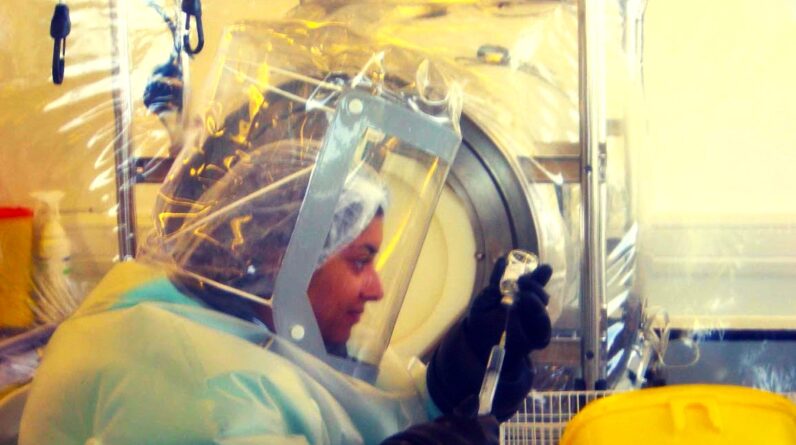
[ad_1]
Testing in a laboratory. Image (C) Tim Sandle
Antibiotic-resistant bacterial infections stand as one of the critical biological threats to human health on a global scale. One example is with multidrug-resistant (MDR) Salmonella enterica. The rise of MDR strains, coupled with the constrained array of treatment options, requires continuous innovation of therapeutic approaches.
According to Pharmaceutical Microbiology Resources: “Salmonella enterica serovar Typhimurium bacteria (S. Typhimurium) commonly cause human gastroenteritis, inflammation of the lining of the intestines. The bacteria live inside the gut and can infect the epithelial cells that line its surface.”
A new study charts the discovery and application of a new therapeutic strategy to target the multidrug-resistant bacterium Salmonella enterica, with promising results.
The research was carried out at the University of Eastern Finland, as well as from the Rosario National University, Argentina, and the University of the Republic, Uruguay. The research introduces a strategy to enhance the efficacy of colistin, a last-resort antibiotic.
Commenting on this, Senior Researcher Christopher Asquith states: “Through the utilisation of a non-antibiotic anti-virulence quinazoline compound, we investigated a dual-pronged therapeutic methodology.”
The combined treatment with the quinazoline and colistin targets Salmonella by simultaneously inhibiting its resistance mechanisms against colistin and disrupting the bacterium’s envelope electrochemical equilibrium.
This synergistic interplay not only introduces a new route to counter MDR bacteria but also lays the groundwork for potentially addressing resistance challenges associated with other antibiotics.
The quinazoline compound specifically affects the key regulatory pathway used by the bacterium for both the advancement of infection and the development of resistance. The outcomes presented within this study underscore the potential of leveraging this pathway to target bacterial disease.
This should also provide a blueprint for tailored interventions beyond Salmonella to a spectrum of bacterial infections.
The efficacy of the dual treatment in mitigating mortality was demonstrated using an in vivo insect infection model, presenting promise in terms of future therapeutic applications.
The research has been published in the journal Scientific Reports, titled “Enhancing colistin efficacy against Salmonella infections with a quinazoline-based dual therapeutic strategy”.
[ad_2]
Source link






